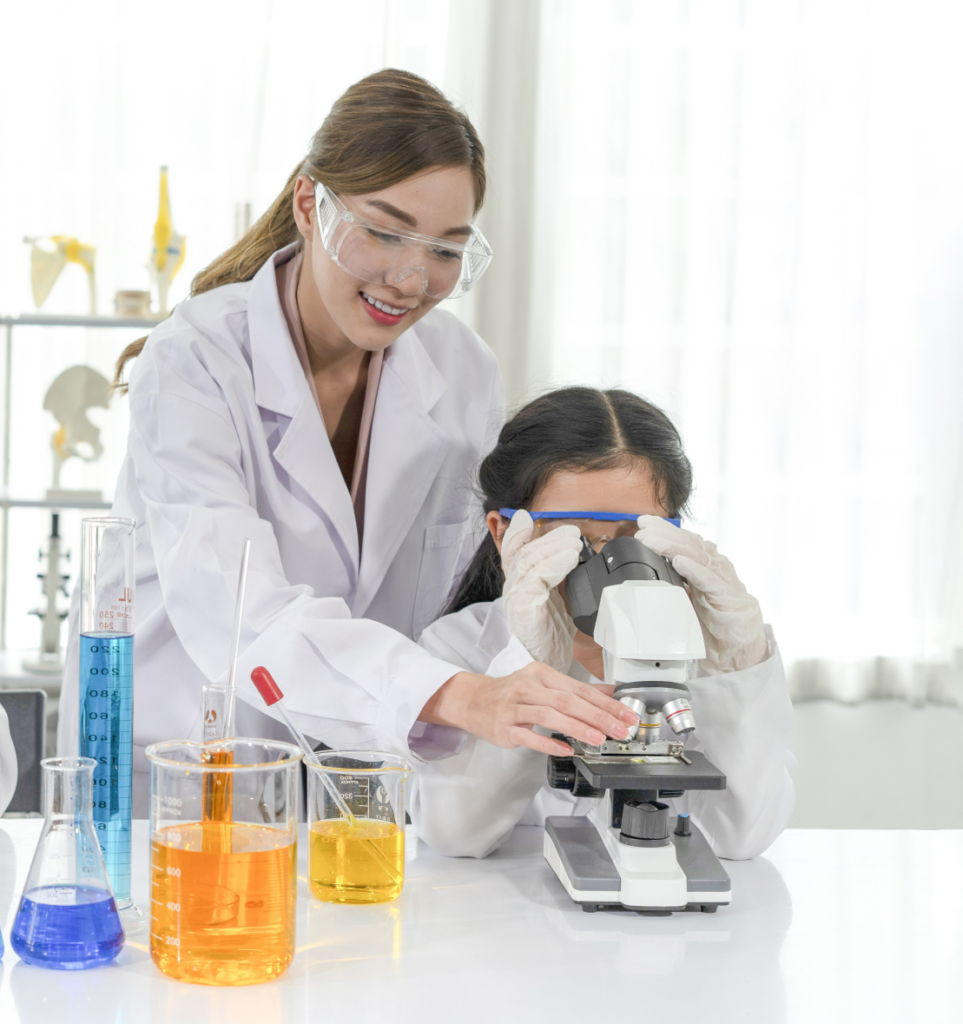The Science, and Art, of Mentoring
Teaching an afterschool forensics course was about more than imparting knowledge of DNA; we aimed to teach students the value of asking questions and seeking answers.
Published August 1, 2014
By Giovanna Collu and Jonathan Isaac Schneiderman
Academy Contributors

Training for our afterschool “forensic science” course flew by: fingerprints, shoeprints, crime scene sketches, hair and fabric samples, and an encouraging “You’ll do great!” Not specializing in forensics, we scribbled down notes and were certainly a little nervous as the slow trickle of students came into the classroom that first day. “Is this ‘MAD SCIENCE’ class?” someone popped their head in and asked. We both looked at each other puzzled, until one of the teachers in the room replied, “Yes, yes it is. Now sit down already.”
Unlike past longer-term mentoring opportunities that we’d had, our afterschool class only ran for one semester. Given that we had a different mix of kids attending each week, it was clear that the brief and sporadic nature of our interaction with each student would require a different mentoring game plan. We needed to quickly establish a relationship of mutual respect, generate and maintain enthusiasm, and most importantly, seed a lasting change in the kids’ relationship with science. Piece of cake, right?
“So, does anyone know what ‘forensic’ means?” we asked a silent classroom. “It’s like on TV, when there’s a crime that needs to be solved,” we explained. But the truth was that we weren’t there to teach them forensics at all. We were there to show them that scientists don’t have to be crazy-haired, old white men—because we aren’t. We were there to be relatable adults who happened to be scientists and were taking the time to teach them something interesting.
A Fun Break from the Classroom Routine
With 90 minutes per session, we knew that time would always be limited. Still, the mission was clear: provide a fun break from the classroom routine. Once the kids were engaged with hands-on activities, we could get them excited about solving problems using an evidence-based approach. Sure, we were “investigating crimes,” but asking questions and critically assessing answers are also important for understanding science as well as the world at large.
We raised the stakes a few sessions into the semester when we planned a fieldtrip to the Harlem DNA Lab, a short train ride away. Tucked away in an area far-removed from our research facilities, the center is a division of Cold Spring Harbor Laboratory, an organization home to numerous Nobel laureates. The trip gave us an exciting opportunity to share a small part of our day-to-day lives with the students.
So there we were, 12 kids, two teachers and the two of us, on the New York City subway during rush hour, on our way to see how DNA is analyzed in a lab. Our mantra-like counting of heads to ensure no child was left behind was all but drowned out by a stream of questions from the group: “Are we going to a real crime lab?” “Will we be wearing white coats?” “Are there going to be dead bodies there?”
After a short refresher about DNA, our instructor, Melissa Lee, quickly split us into groups, each equipped with a gel-box and colored tubes. Once all the kids tried their luck loading samples, the gang was teeming with excitement and huddled in the dark around an illuminated gel. “Wow! Does DNA really glow green?” one of them asked. “Well, not exactly…we use a fluorescent dye to see it,” Melissa replied with a smile.
Exciting for Students and Teachers
On our way back, the chatter had a new topic, and now the teachers were in on the conversation, too. Apparently, seeing DNA was pretty cool and warranted further discussion, and that was the whole point. We wanted to use the little time we had to get everyone excited; not just the kids, but the teachers as well. After all, the teachers’ continuous reinforcement would ultimately ensure none of these children would be left behind.
Time will tell whether we succeeded in making a lasting change. However, we knew that we’d achieved one of our goals. When asked how a “real scientist” would dress, one student quickly replied, “She can wear whatever she wants.” Although we weren’t there to convince them all to become lab scientists, conveying that they were fully capable of doing so was certainly a good use of our time.
So, what worked well with our group? Like most things in life, it all came down to striking a balance. We had to enter the classroom with a clear teaching objective, but at the same time be flexible enough to let the kids follow up with tangential questions so that they felt engaged. We also learned to include a variety of activities and not be too didactic. Overall, though, the key to this mentoring experience was to be ourselves, have fun solving crimes, and let our love of science speak for itself.
Giovanna Collu, PhD, is a postdoctoral fellow in the Mlodzik Lab at the Icahn School of Medicine at Mount Sinai.
Jonathan Isaac Schneiderman, PhD, is associate director of science at McCANN RCW.
This story originally appeared in the summer 2014 issue of The New York Academy of Sciences Magazine.
